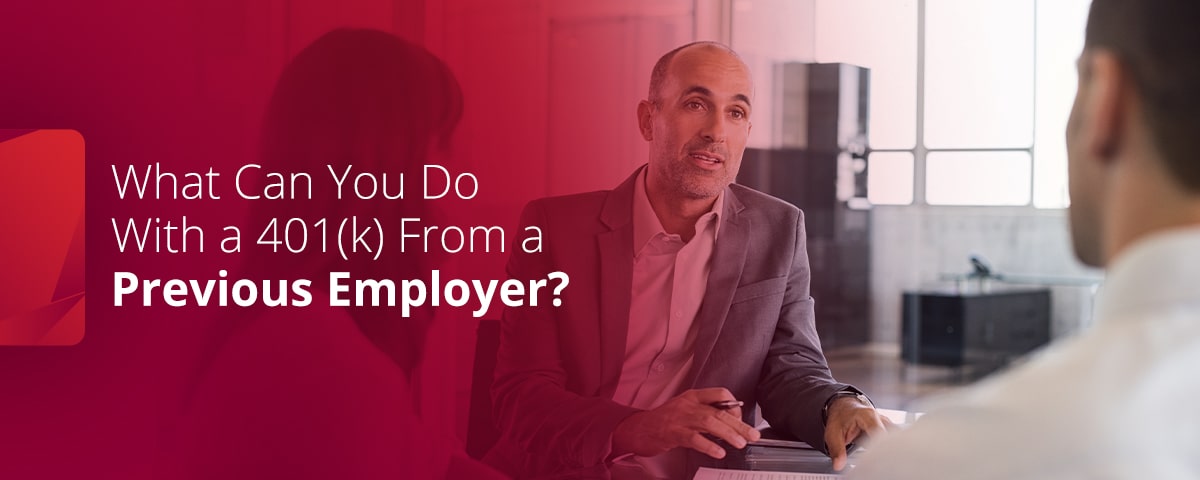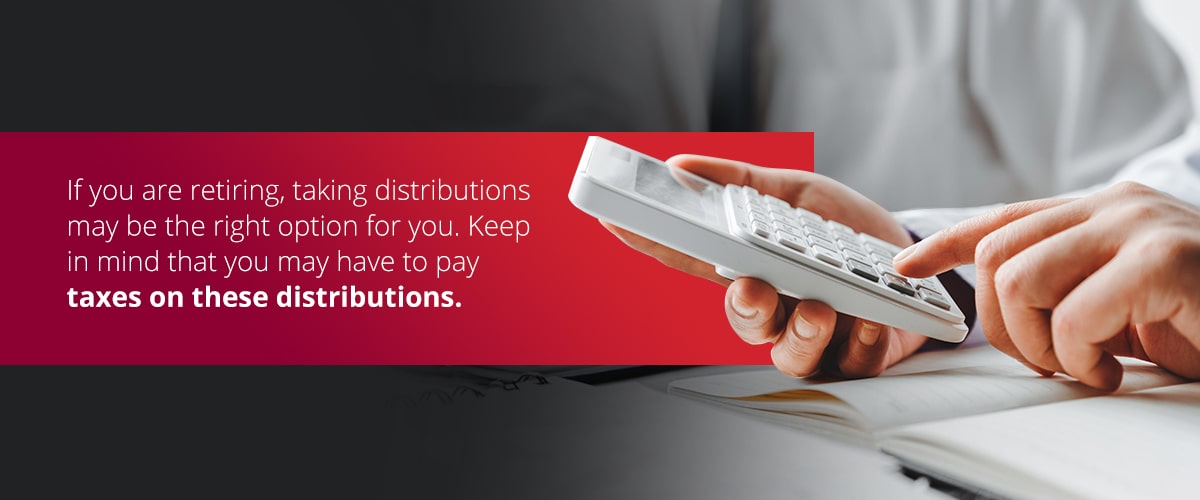
One type of employer-sponsored retirement plan is a 401(k). Self-employed individuals can also open a self-directed 401(k) plan. If you have a 401(k) from a previous employer, you may be wondering what you can do with your account.
What Can I Do With My 401(k) Plan From a Previous Employer?
You have a few options on how you can proceed when you have a 401(k) plan with a former employer. These options include rolling over your 401(k) into a new 401(k) plan or a self-directed plan, keeping your plan with your previous employer, taking distributions or cashing out.
1. Roll Over Your 401(k)
One of the best ways to invest a 401(k) from a previous employer is by rolling it over to a self-directed IRA or 401(k). A rollover involves moving your 401(k) funds to another 401(k) or IRA. During a rollover, you will receive your funds before you send them to your new account. This distribution is considered tax-free. When you choose to roll over your 401(k) into a self-directed IRA or 401(k), you can invest in alternative assets like precious metals, real estate and cryptocurrency.
You can also roll over your 401(k) to a plan with your new employer. This may be a good option if your new employer’s 401(k) offers a variety of low-cost investments. However, you may not have as many investment options as you will with a self-directed plan.
You have 60 days to deposit your 401(k) funds from a previous employer into your new retirement account. Keep in mind that you can also only perform one IRA rollover per year.
2. Keep Your Plan With Your Previous Employer
In some cases, your former employer may allow you to keep your 401(k). If you are satisfied with your investment options, you may want to leave your plan with your previous employer. However, there are a few factors that may influence your decision, such as how much money you have in your 401(k), whether your account has publicly traded stock for your former employer, whether you are fully vested and the amount of fees you are expected to pay.

3. Take Distributions
You can take qualified distributions from your 401(k) after you reach age 59 ½. This means you will not have to pay a penalty for an early withdrawal once you reach this age. If you are retiring, taking distributions may be the right option for you. Keep in mind that you may have to pay taxes on these distributions.
4. Cash Out Your 401(k) From a Previous Employer
Cashing out may be another option to consider. Yes, you can cash out your 401(k) from a previous employer. However, there are several implications to cashing out that you should consider before proceeding. A cash withdrawal from your 401(k) may be subject to federal, state and local taxes. You may also need to pay a 10% penalty for withdrawing from your 401(k) early.
Roll Over Your 401K From a Previous Employer
At Accuplan, we provide self-directed IRA administration and 401(k) administration. Our team has several years of experience in the retirement account industry. We are experienced and trained in every aspect of self-directed 401(k) plans and IRAs. We help ensure your plan is in compliance with IRS rules and federal and state laws.
Our intuitive dashboard is designed with self-direction in mind, so investing in alternative investments is quick and easy. Contact us at Accuplan today to learn more about the best way to invest a 401(k) from a previous employer or fill out our form for onboarding.
Our content should not be relied on for investment advice but simply for informational or educational purposes only. Our information is not meant to provide, nor should it be depended on for advice regarding investment, tax, legal or accounting concerns.
Author: Nick Barker